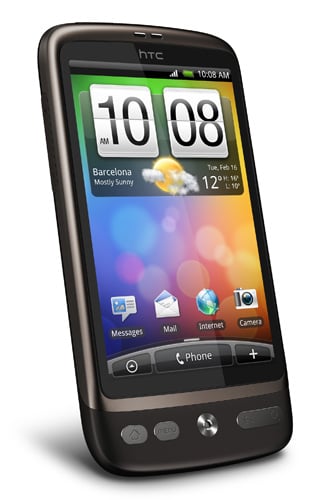HTC Desire


Intendix works using an EEG-sensitive cap that measures brain activity that is focused in a particular way. You simply watch a grid of letters that flashes on the screen, focusing on the letter you want to type. When the letter you want lights up, your brainwaves jump ever so slightly, allowing the EEG to determine what to type. Guger Technologies claims that the interface is simple enough that users can utilize it relatively well after just ten minutes of training.
Posted by
RameNet Information Systems
at
15:59
0
comments
![]()
Labels: BCI, Brain, Computerized, EEG


 Its google buzz time and don't know how many will hit. The beginning is not good but may be expect some edit in the next few days. Cannot allow contacts in public. Let see what buzzing...
Its google buzz time and don't know how many will hit. The beginning is not good but may be expect some edit in the next few days. Cannot allow contacts in public. Let see what buzzing...
Posted by
RameNet Information Systems
at
16:13
0
comments
![]()
Labels: Buzz, Data Network, Google, social
A DVD that can store up to 2,000 films could usher in an age of 3D TV and ultra-high definition viewing, scientists say. The ultra-DVD is the same size and thickness as a conventional disc, but uses nano-technology to store vast amounts of information.
Scientists believe it could be on sale. One disc could back up the memory of a computer or record thousands of hours of film.
The breakthrough comes from Swinburne University of Technology, Melbourne, Australia, where scientists created a prototype using 'nano rods' - tiny particles of gold too small to see - and polarised light, in which the light waves only flow in one direction.
Professor Min Gu, whose findings appear in the journal Nature, said: 'We were able to show how nano-structured material can be incorporated on to a disc to increase data capacity without increasing the size of the disc.'
A DVD can hold up to 8.5 gigabytes of information, enough for a movie, several special features and an alternative soundtrack.
Blu-ray discs, which were designed to replace them, can store 50GB, enough for a film and extra features in high definition.
But ultra-DVDs will be able to store ten terabytes - or 10,000GB.
A conventional DVD records music, pictures and computer files as digital code - a series of ones and zeroes. The code is written as a series of pits under the clear surface of the disc and is read by a DVD player's laser.
The technology could help usher in an age of 3D TV or ultra-high definition.
.
Posted by
RameNet Information Systems
at
14:12
1 comments
![]()

The device has been unmasked by O2’s German arm, which said it has the I7500 exclusively. It’s unlikely the operator will restrict sales solely to Germany, although we’ve yet to hear anything about a UK launch date.
Aside from all the usual Android OS characteristics, the I7500 supports unspecified HSDPA 3G bandwidth, GSM/GPRS/Edge connectivity, Bluetooth 2.0 and 802.11b/g Wi-Fi. GPS is also built in.
A 3.2in, 320 x 480 touch-sensitive display is average these days, as is the I7500’s 5Mp camera and LED flash. However, you’ll also be able to record videos – with a selection of formats supported, including H.264, MPEG 4 and WMV – and listen to several audio formats, such as MP3, AAC and WMA.
The phone itself measures 115 x 56 x 11.9mm and is equipped with 8GB of internal storage. However, if that’s not enough for you, it also accepts Micro SD memory cards of up to 32GB in capacity.
Samsung’s I7500 will be available, in Germany at least, during June. A price hasn’t been announced yet. ®